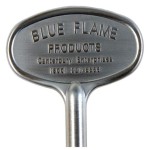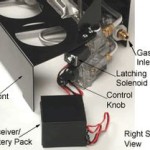Can I Mount My TV Above My Fireplace? Considerations and Practicalities
Mounting a television above a fireplace is a popular interior design choice, offering a visually appealing focal point and potentially optimizing space within a room. However, this seemingly straightforward decision involves a series of considerations that must be addressed to ensure both the longevity of the television and the safety of the installation. This article will explore the advantages and disadvantages of mounting a television above a fireplace, focusing on critical factors like heat exposure, viewing angles, installation challenges, and available solutions.
Understanding the Impact of Heat
The primary concern when mounting a television above a fireplace is the potential damage caused by heat. Televisions are electronic devices designed to operate within a specific temperature range. Exposing them to excessive heat can significantly reduce their lifespan and potentially lead to component failure. Heat rises, and the area directly above a fireplace can experience significantly elevated temperatures during and after use. The intensity of the heat depends on several factors, including the type of fireplace (wood-burning, gas, or electric), the duration of use, and the presence of a mantel or other heat-deflecting elements.
Wood-burning fireplaces typically generate the most intense heat. The direct flames and burning embers produce a substantial amount of radiant heat that can quickly overwhelm the television. Gas fireplaces offer more control over the heat output, but they still produce a considerable amount of heat. Electric fireplaces, while generally producing less heat than wood-burning or gas fireplaces, can still contribute to elevated temperatures around the television.
Before deciding to mount a television above a fireplace, it is crucial to measure the temperature in the intended mounting location while the fireplace is in use. This can be accomplished using a thermometer or an infrared temperature gun. If the temperature consistently exceeds the television manufacturer's recommended operating range, alternative mounting locations should be considered. The manufacturer's specifications will usually be provided in the television's user manual or on the manufacturer's website. Exceeding these temperature limits can void the warranty and significantly shorten the lifespan of the device. Furthermore, prolonged exposure to excessive heat can warp the plastic casing, damage the internal circuitry, and degrade the picture quality.
Even if temperature measurements initially appear acceptable, they should be taken over extended periods of fireplace use and during different seasons. The ambient temperature of the room can significantly affect the heat buildup above the fireplace. What may be acceptable during a cool winter evening could be problematic during a warmer spring day.
Optimizing Viewing Angles and Ergonomics
Beyond the potential for heat damage, viewing angle and ergonomics are critical considerations when mounting a television above a fireplace. The optimal viewing angle for most individuals is slightly below eye level when seated. Mounting a television significantly above eye level, as is often the case above a fireplace, can lead to neck strain and discomfort during prolonged viewing sessions. This is particularly relevant for individuals who regularly watch television for extended periods.
The height of the fireplace and the seating arrangement in the room will directly impact the viewing angle. A higher fireplace will necessitate a higher television mount, exacerbating the issue of neck strain. To mitigate this problem, several solutions can be explored. One option is to use a tilting television mount. These mounts allow the viewer to angle the television downwards, improving the viewing angle and reducing neck strain. However, even with a tilting mount, the viewing experience may not be ideal, especially for individuals who are particularly sensitive to ergonomic issues. Another option is to use a pull-down television mount. These mounts allow the user to lower the television to a more comfortable viewing height when in use and then raise it back up when not in use. This solution offers the best of both worlds, providing an aesthetically pleasing appearance while also maintaining optimal ergonomics during viewing.
Consideration should also be given to the distance between the seating area and the television. A television mounted too high may also be too far away for optimal viewing. The size of the television should be appropriate for the viewing distance. A larger television is generally recommended for greater viewing distances. Various online calculators can help determine the optimal television size based on the viewing distance.
The overall layout of the room also plays a significant role. If the room is small, mounting the television above the fireplace might be the only viable option. However, if the room is larger, exploring alternative mounting locations, such as on a separate wall, may provide a more comfortable and ergonomic viewing experience.
Installation Challenges and Solutions
Mounting a television above a fireplace presents several installation challenges that must be addressed to ensure a safe and secure installation. The primary challenge is the presence of the fireplace and its associated construction materials. Fireplaces are often surrounded by brick, stone, or concrete, which can be difficult to drill into and may require specialized tools and anchoring techniques. Wood framing exists inside of walls and around the firebox of most fireplaces, but these are not always evenly spaced and might not be located where the mounting hardware needs to be placed.
Before beginning the installation process, it is crucial to determine the composition of the wall above the fireplace. Brick, stone, and concrete will require the use of a hammer drill and masonry drill bits. Standard drill bits will not be effective and can be damaged by these materials. Furthermore, specialized anchors designed for masonry are necessary to ensure a secure hold. These anchors typically expand within the drilled hole, providing a strong and reliable connection.
Locating wall studs can be problematic, especially if the wall is covered with brick or stone. A stud finder may not be effective in these situations. In such cases, it may be necessary to use a specialized stud finder designed for thicker walls or to rely on alternative methods, such as drilling pilot holes to locate the studs manually. Once the studs are located, ensure that the television mount is securely attached to the studs using appropriate screws. Avoid relying solely on drywall anchors, as they may not be strong enough to support the weight of the television over time.
Routing cables can also be a challenge. Hiding the power cord and HDMI cables is essential for maintaining a clean and aesthetically pleasing appearance. This can be accomplished by running the cables through the wall using a cable concealment kit. These kits typically include a drill bit and a hole saw for creating openings in the wall. The cables are then run through the openings and concealed behind the wall. Alternatively, cable management solutions can be used to organize and conceal the cables along the wall's surface. These solutions typically involve the use of cable channels or covers that can be painted to match the wall color.
Consider the placement of electrical outlets and cable connections. If these connections are not already located near the intended mounting location, it may be necessary to hire an electrician to install new outlets and run new cable lines. This should be done before beginning the installation process to avoid any last-minute complications. It is also crucial to ensure that the electrical outlets are properly grounded and that the wiring is up to code.
Finally, consider hiring a professional installer. While it is possible to mount a television above a fireplace as a DIY project, it is often recommended to hire a professional installer, particularly if the wall is made of brick, stone, or concrete, or if you are not comfortable working with electrical wiring. Professional installers have the necessary tools, expertise, and experience to ensure a safe and secure installation. They can also advise you on the best type of mount to use and can help you troubleshoot any potential problems that may arise. A professional installer can also guarantee that the television is level and securely mounted, providing peace of mind and ensuring the longevity of your investment.

Can I Mount My Tv Above The Fireplace
Can I Mount A Tv Over My Fireplace Heatilator

Can I Mount My Tv Above The Fireplace

Can I Mount A Tv Over My Fireplace Warming Trends

Can I Mount My Tv Above The Fireplace

Is It Safe To Mount Your Tv Above The Fireplace Chimney And Wildlife

Mounting A Tv Above The Fireplace Mantelmount

ᑕ❶ᑐ What To Consider Before Mounting A Tv Above Fireplace

How To Mount A Tv Over Fireplace Vertical Chimney Care

Should A Fireplace Be Bigger Than The Tv Solved Tips
Related Posts








